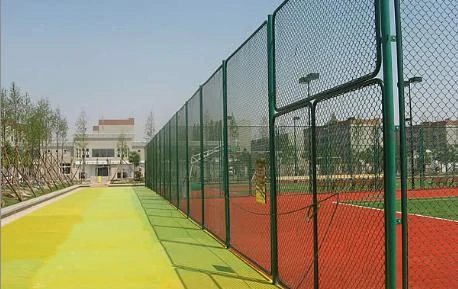 TEL:
+86-13102802206
TEL:
+86-13102802206
 Email:
fencenetting@china.com
Email:
fencenetting@china.com
 Language
Language
 TEL:
+86-13102802206
TEL:
+86-13102802206
 Email:
fencenetting@china.com
Email:
fencenetting@china.com
 Language
Language


The Beauty and Functionality of Wood Gabion Walls
In the realm of modern landscaping and structural design, wood gabion walls have emerged as a compelling choice for both aesthetic appeal and functional integrity. These innovative structures, which combine the natural beauty of wood with the rugged sturdiness of stone-filled wire baskets, represent a harmonious blend of nature and engineering.
At its core, a gabion wall consists of a series of wire cages filled with stones or other materials, creating a robust barrier. When wood elements are introduced into this framework, the result is not just a functional wall but a visually stunning feature that can enhance any outdoor environment. The combination of wooden components and the earthy texture of stone allows these walls to fit seamlessly into a variety of landscapes, from rustic gardens to modern urban settings.
Aesthetic Appeal
The use of wood in gabion walls brings a warm and organic feel to outdoor spaces. Unlike traditional concrete or brick walls, which can appear stark and uninviting, a wood gabion wall complements the natural surroundings. The wooden elements can be treated or left in their natural state, allowing for a range of finishes that cater to individual design preferences. Whether it's the deep hues of treated hardwood or the lighter tones of cedar, the inclusion of wood adds depth and character to the structure.
Moreover, the ability to mix and match different types of wood can lead to unique and personalized designs. Homeowners and landscape architects often experiment with various styles, incorporating features like green walls, planters, or even seating areas into the gabion structure. This adaptability makes wood gabion walls an appealing option for those looking to create a distinctive outdoor space.
Functional Benefits

Beyond their aesthetic advantages, wood gabion walls are also known for their functionality. The primary purpose of a gabion wall is to act as a retaining wall, providing support to the soil and preventing erosion. This is particularly important in sloped areas where soil instability can lead to significant problems. The inclusion of wooden elements can increase the structural integrity of the wall, making it not only effective but also sustainable.
Wood gabion walls also offer excellent drainage properties. The spaces between the stones allow water to flow through easily, reducing the likelihood of pooling and further erosion. This natural drainage system is beneficial in managing water runoff, making them an eco-friendly choice for landscaping projects.
In addition to their practical benefits, wood gabion walls can also provide noise reduction and privacy. By serving as a barrier between properties, they can help mitigate sound from nearby roads or neighborhoods, creating a serene outdoor environment. This is particularly advantageous for urban dwellers seeking solace amidst the hustle and bustle of city living.
Sustainability
The rising trend of sustainability in construction and landscaping has further propelled the popularity of wood gabion walls. Wood sourced from sustainable forests can significantly reduce the carbon footprint associated with building materials. Moreover, these structures can often be constructed using reclaimed wood, giving new life to materials that might otherwise be discarded. This aligns perfectly with the principles of eco-friendly building and sustainable landscaping.
Conclusion
In conclusion, wood gabion walls represent a remarkable fusion of beauty and functionality. They offer an aesthetically pleasing alternative to traditional fencing and retaining walls while providing the robust support needed to manage landscaping challenges. With their ability to blend seamlessly into any environment, enhance drainage, offer privacy, and promote sustainability, wood gabion walls are undoubtedly a worthy addition to any outdoor space. As more people seek innovative and eco-friendly solutions for their landscaping needs, these structures are likely to become even more popular in the years to come.